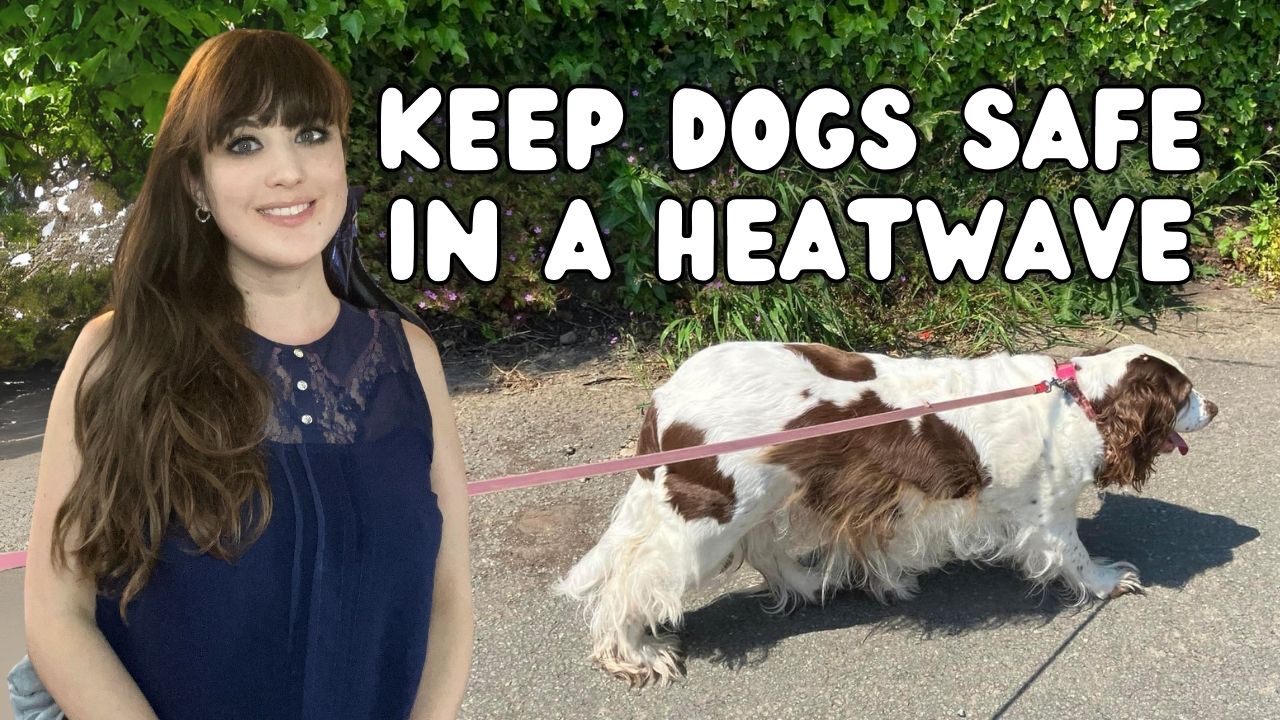
As an Amazon Associate I earn from qualifying purchases.
On the JJ Barnes Blog, as the weather warms up, I check out top tips to keep dogs safe in a heatwave.


As the mercury rises and the sun beats down, it’s crucial to keep our furry friends cool and comfortable. With summer in full swing, Molly and I are swapping our cozy winter walks for early morning adventures to avoid the heat. But as temperatures soar, it’s essential to be extra vigilant about protecting our pups from the dangers of a heatwave. So, let’s dive into some top tips to keep your dogs safe and happy during those scorching days.
To help me out, first aid experts at Skills Training Group have sent over their top tips for spotting the symptoms of heatstroke in dogs alongside some top emergency first aid tips that could potentially save your beloved pets life.
Key Takeaways:
- Heatstroke in dogs can occur at temperatures of just 16 degrees.
- Certain breeds of dogs are at higher risk of heatstroke.
- Heatstroke occurs when the body overheats. In dogs, this is typically categorised as a core body temperature of 41 degrees celsius or higher.
What is heatstroke?
Heatstroke occurs when the body overheats. In dogs, this is typically categorised as a core body temperature of 41 degrees celsius or higher. At these elevated temperatures, the body is unable to function as needed, and begins to shut down.
Many cases of heatstroke in dogs are caused by physical exertion in hot weather, such as midday walks on summer days. However, heatstroke can also be caused by prolonged periods in hot environments, such as conservatories that have been heated by the sun all day, or hot cars. Under the Animal Welfare Act, owners can be charged with a criminal offence for leaving dogs in their vehicle.
Heatstroke symptoms in dogs:

Heatstroke can occur in dogs at temperatures of just 16 degrees so knowing what to look for is essential even if the weather doesn’t feel too hot, some signs to keep an eye out for include:
· Excessive breathing and heavy panting
· Restlessness, pacing, or unusual anxious behaviour
· Excessive drooling and sticky saliva
· Changes to the gums, such as dryness, darkening, or bruising
· Red tongue
· Rapid heart rate
· Vomiting or diarrhoea
As heatstroke progresses, dogs may begin to present with more severe signs, like…
· Serious fatigue and lethargy
· Confusion and dizziness
· Weakness, balance problems, or collapse
· Unconsciousness
· Seizures
Some types of dogs are understood to be more susceptible to heatstroke than others. This includes flat-faced dogs, large breeds, long haired dogs, puppies and elderly dogs, and overweight dogs. However, any dog can experience heatstroke, which is why it’s so important to monitor behaviour during high temperatures.
4 steps to take if you think your dog may be affected by heat stroke:
Step 1: Remove the immediate risk – The first step when heat stroke is suspected is to remove the dog from the hot environment and help to relax the body if the animal has been agitated and anxious. Seek shade, act calmly, and reassure the dog using soothing tones.
Step 2: Create a cool environment – Immediately try to cool down the air temperature of the space. This may include opening windows and doors to create a breeze, shutting blinds or curtains to block out sun, turning on air conditioning, or using a fan to circulate air around the dog.
Step 3: Cool the dog down – Try to remove as much heat from the dog’s body as possible. Encourage the dog to sit on a water-soaked towel, or gently pour cold water over the fur.
Alternatively, you can submerge their body in water, but only if they are used to being in water. It’s also extremely important to make sure they don’t inhale any water.
You can also try wrapping frozen veg or an ice pack in a towel and place it between your dog’s thighs.
Dogs can be provided with water to drink, but don’t force them to drink if they don’t want to.
Step 4: Contact a vet – Once the dog is in a safer environment, contact a vet and arrange for an emergency visit. Dogs should be kept as cool as possible during transport, with open windows and air conditioning if possible. An extra pair of hands may be necessary.
How you to prevent heat stroke in dogs:

· Avoid walks during the hottest time of the day
· Ensure dogs always have access to a cool, shaded area
· Do not encourage fun and games when it is very warm
· Provide plenty of water throughout the day
· Offer hydrating snacks, such as cucumber or dog-safe berries
· Groom regularly to keep fur short
· Utilise cooling mats and toys
· Know the signs, and act quickly if heat stroke is suspected
Conclusion
Remember, every dog is different, so it’s important to observe your furry friend closely during hot weather. Molly and I are always learning new ways to stay cool and comfortable, and I encourage you to do the same. By following these tips and being mindful of your dog’s needs, you can help ensure a safe and enjoyable summer for your best friend.
Support The Table Read
We strive to keep The Table Read free for everyone. If you’ve enjoyed our work, consider donating to help us continue providing quality content!
Amazon and the Amazon logo are trademarks of Amazon.com, Inc, or its affiliates.






